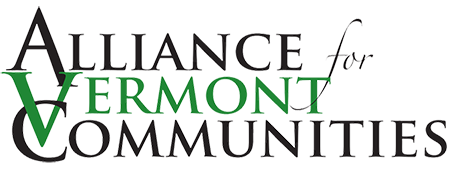What is the proposed Ashley Community Forest?
The Ashley property is an historic and ecologically diverse 256-acre parcel of forest land located along the boundary between Sharon and Strafford, Vermont. The land was a keystone parcel to the acreage that David Hall, a Utah developer, was amassing for his out-of-scale NewVistas project. In June of 2018 the property was acquired by the Alliance for Vermont Communities (AVC), a local nonprofit community group, in an effort to block the development. AVC’s intent has always been to give the land to the towns in which it sits, as a shared community forest to be used for recreation, wildlife habitat, historic preservation, timber, scenic beauty, and educational opportunities.
The land was purchased from the Ashley family with help from many generous donors, the Vermont Land Trust (VLT) the Vermont Housing and Conservation Board (VHCB). Fundraising for the project was completed in December 2019.
This spring, with a positive vote from the townspeople of Sharon and Strafford, AVC plans to give the Ashley Community Forest to the two towns along with $20,000 cash to seed a management fund.
Strafford is holding Town Meeting 2021 virtually on March 2, while Sharon opted to delay Town Meeting until May 8, 2021. Sharon Selectboard agreed to begin discussion regarding a two town management structure if Strafford votes yes.
Where is the Ashley Community Forest?
The Ashley parcel is located in both Sharon and Strafford and is accessed from the south by Fay Brook then Clifford Farm Road, or from the north by Nutting Road. It is just south of the Manning Farm and just west of the Robinson Farm in Strafford. The land has a number of well-constructed farm and logging roads that could easily be developed into recreational trails. There are scenic views from the height of land.
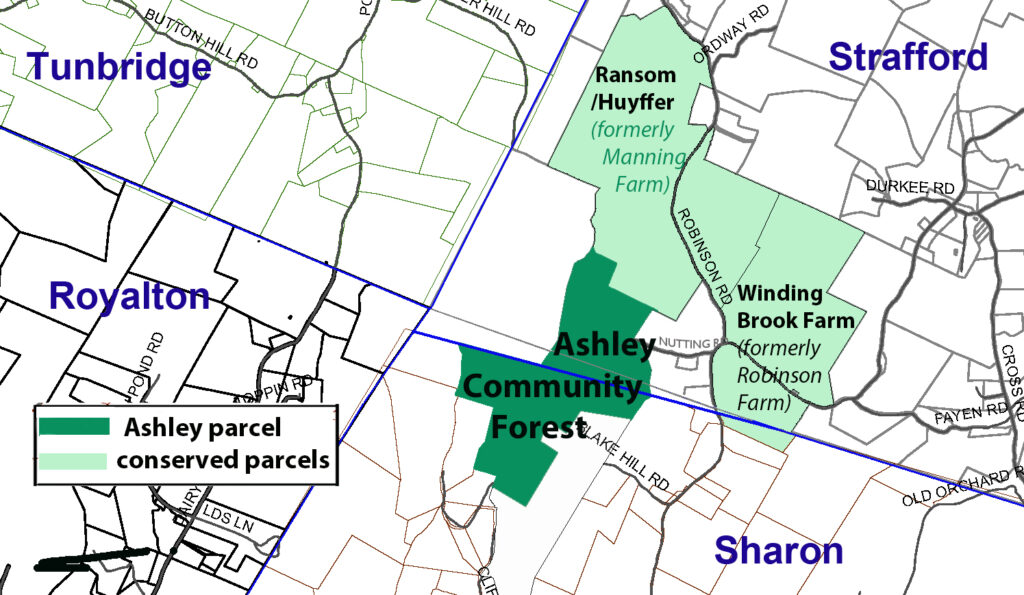
How will the Ashley Community Forest be used?
The Ashley Community Forest would be a working forest, open to the public for hiking, skiing, hunting and other recreational uses. The land is contiguous to other conserved parcels with plans underway for a network of recreational trails. Schools in both Sharon and Strafford are already discussing how to use the land as an educational resource. The Ashley Community Forest has excellent examples of historic stone foundations that date from the first half of the 19th century. The forest and wildlife are both interesting and diverse. It is a perfect place for student exploration of any age. It will be a gathering place for generations to come.
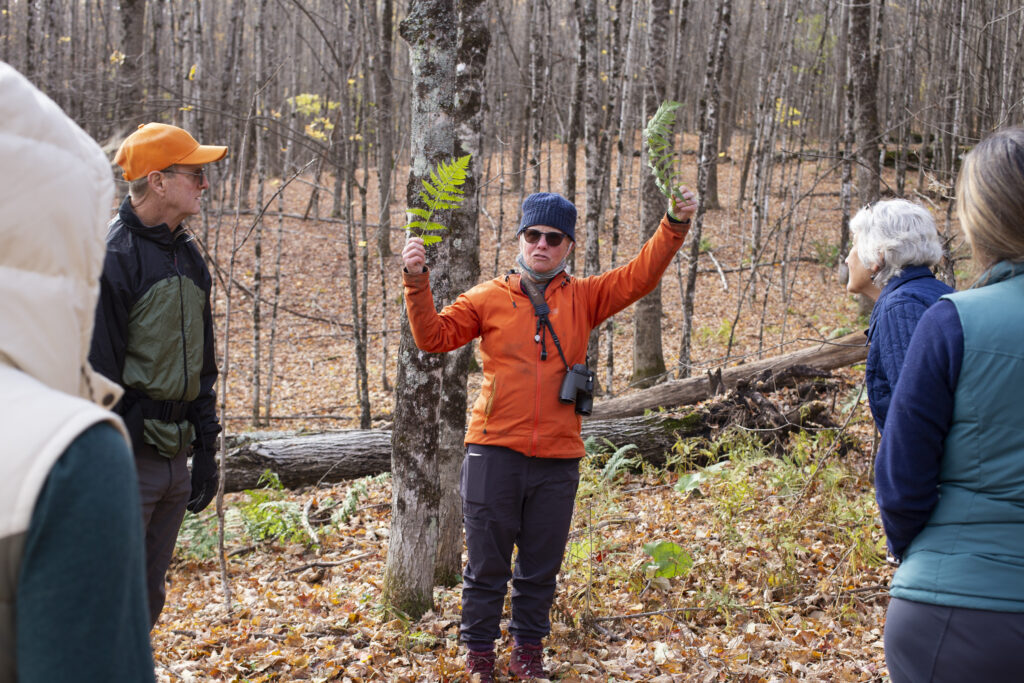
Who would manage and maintain the Ashley Community Forest?
At present the land is owned and managed by AVC. If the towns accept the gift of this land, the Ashley Community Forest would be owned jointly by both towns. A management plan would be developed with public input and the approval of both towns, the Vermont Land Trust and the Vermont Housing and Conservation Board. Management activities on the Ashley Community Forest would be initiated and overseen by two or three citizens appointed by each towns. The Ashley Community Forest Board would be charged with the responsibility to manage and maintain the forest in accordance with the approved management and forestry plans. Initial thinking is that an Ashley Community Forest Fund would be established with the $20,000 cash gift provided by AVC and managed jointly by both towns to fund activities at the forest. Future contributions to the Fund would come from timber sale revenue on the forest, private donations or other sources. In the long-term the Ashley Community Forest is expected be financially self- sustaining.
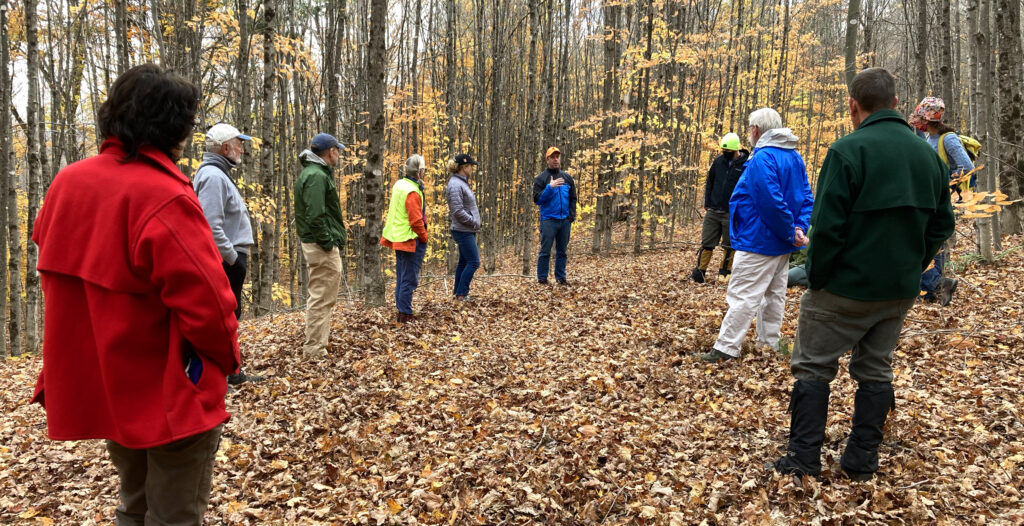
If the towns accept the gift of this forest, will there be a cost in forgone property taxes?
Forgone Property Taxes: February 2021 update by David Pagenelli
Property taxes in Vermont are assessed in part to fund local municipal expenses, and in part to fund statewide education expenses. The municipal portion of property tax collected by towns, belongs to the towns and stays with the towns. The education property tax collected by towns, belongs to the State and is passed on to the State in its entirety. Education property tax therefor, cannot be “lost” or “forgone” by towns.
The Ashley Community Forest has been enrolled in the Current Use program beginning in April 2020. This enrollment has not affected the tax collected by the towns. When land is enrolled in Current Use, the landowner pays less property tax, and the State makes up the difference through a “Hold Harmless Payment” to the town. Whether land is enrolled in Current Use or not, the town receives exactly the same amount of municipal property tax.
If the towns of Strafford and Sharon accept the generous gift of the 256.4-acre Ashley Community Forest, the land would be transferred from private (taxable) ownership to public (tax-exempt) ownership. Since the towns would no longer collect property taxes on the parcel, each town would forgo the value of municipal taxes currently collected. Based on the assessments and tax rates of 2020, and conversations with listers in both towns, the following are estimates of future forgone municipal taxes if the towns ultimately take ownership of the Ashley Community Forest:
Strafford – A conservation easement is expected to be placed on the Ashley Community Forest during 2021. That easement would prevent future residential development on the parcel, and the town would be expected to remove the house site valuation that is currently part of the assessment. This would decrease the total parcel assessment (in Strafford) to approximately $106,400. We don’t know future municipal tax rates, but using the rate from 2020, the forgone municipal property tax in Strafford would be approximately $769/year.
Sharon – There is no house site included in the assessment for the Sharon portion of the Ashley Community Forest, since the parcel has no town road frontage in Sharon. Therefor, when a conservation easement is placed on the parcel, there would be no reduction expected in the Sharon assessment. Based on the current (2020 tax bill) assessment of $158,200, and the municipal tax rate from 2020, the forgone municipal property tax in Sharon would be approximately $1,217/year.
Based upon U.S. Census data (December 2019), the population of Strafford was 1,068 people, and the population of Sharon was 1,373 people.
If we divide the expected forgone municipal taxes in both towns by the estimated populations, we find that the cost of ownership in both towns is less than $1 per person per year.
Is there enough value in the land and timber to make the ACF self-sustaining?
A cash gift of $20,000 would be provided by AVC to seed the Ashley Community Forest Fund. A 2020 timber assessment placed timber value at approximately $61,600, with annual growth of $1,600-1,700/year over the next 20 years. It is estimated that timber value at the time of transfer to the towns will be approximately $41,000. After the first decade of ownership, and including an estimated $3,500 timber sale, the timber value is expected to have grown to $48,000. After the second decade of ownership, and including an estimated $5,000 timber sale, the timber value is expected to have grown to $57,000. After 30 years of ownership, with careful management of the timber asset of the parcel, it is expected that periodic timber sale revenue, along with continued private support through donations and grants, will fund all normal management expenses of the Ashley Community Forest and make the forest a fully self-sustaining entity. The citizens of both towns, and their visitors, would have full recreational use of a 256-acre forest in perpetuity.
Would accepting the forest cost taxpayers more for liability insurance?
No, the towns’ current liability insurance is adequate.
What is a conservation easement, and would there be an easement on the Ashley Community Forest?
A conservation easement is a legally binding agreement that clearly defines what uses of land are allowed or not allowed. The easement is monitored annually by the easement holder, in this case the Vermont Land Trust and the Vermont Housing and Conservation Board. AVC would place a conservation easement on the Ashley Community Forest before passing ownership to the towns. The easement would allow forestry, agriculture and most outdoor recreational activities and would prohibit subdivision, commercial or recreational development and mining. The easement would be held jointly by Vermont Land Trust (VLT) and the Vermont Housing and Conservation Board, and monitored by VLT.
Who would build and maintain the recreational trails in the Ashley Community Forest?
It is expected that the Ashley Community Forest would have an extensive recreational trail system that would connect with trails on the neighboring conserved properties, creating a recreational attraction that would draw local residents and visitors to the area and benefit local businesses. The Ashley Community Forest Board would be responsible for building and maintaining trails, but the Board could employ a third party, such as the Upper Valley Trails Alliance or other trail-building organization, as well as the many and talented local volunteer workers and stewards. The forest would be part of the community, and state and federal grants are available for trail building and recreational purposes. In the Fall of 2019, AVC was awarded at least 2 years of assistance through the Rivers, Trails and Conservation Assistance Program administered by the National Park Service who will offer guidance to trail development and promotion in the Four Town area. In 2020, AVC was awarded $15,000 from the Davis Foundation to provide infrastructure to the trail network.
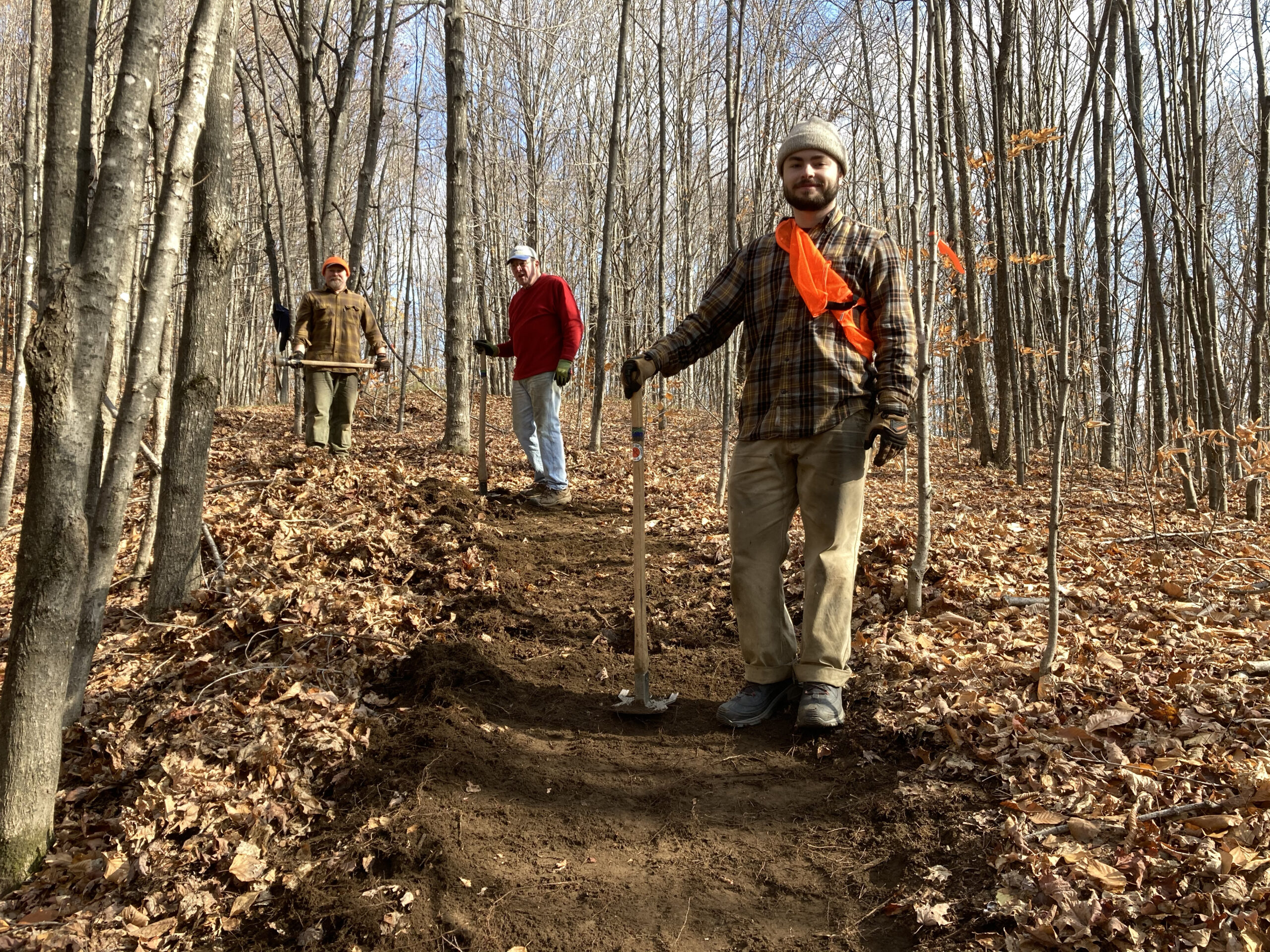
If the Ashley Community Forest is to remain a working forest, who will organize and supervise forest management activities?
These duties would likely be shared by the Orange and Windsor County Foresters, at no direct cost to the towns. County Foresters are employed by the Vermont Department of Forests, Parks & Recreation and part of their duties include management of community forests upon request. The towns could also hire a private consulting forester. Since April 1, 2020, the parcel has been enrolled in the Current Use Program with a forestry plan developed by David Paganelli, Orange County Forester, and AJ Follensbee, Windsor County Forester.
How would the funds generated from timber sales, and other revenue be used?
All of the revenue from the Ashley Community Forest would be placed in the Ashley Community Forest Fund for use to maintain and improve the property. Allocation of funds would be under the jurisdiction of the appointed Ashley Community Forest Board in accordance with the management plan approved by the two towns.
How will the parking areas be maintained?
Nothing requires that the towns take this responsibility on, but since the principal access road is plowed and maintained to the entrance of the forest, and since the forest would be a municipal ownership, and since citizens of both towns might want the Ashley Community Forest to be accessible to the public in Winter, it would be reasonable to expect the towns might work out some system for plowing and maintaining the road and parking area, as they might do for other town owned facilities.
What if one town declines and the other town votes to accept the gift?
One town would own the 256 acre parcel in its entirety and would pay taxes on the acreage in the other town. Since the land is in the Current Use Program beginning April 1, 2020, the taxes are estimated to be around $500-700 per year.
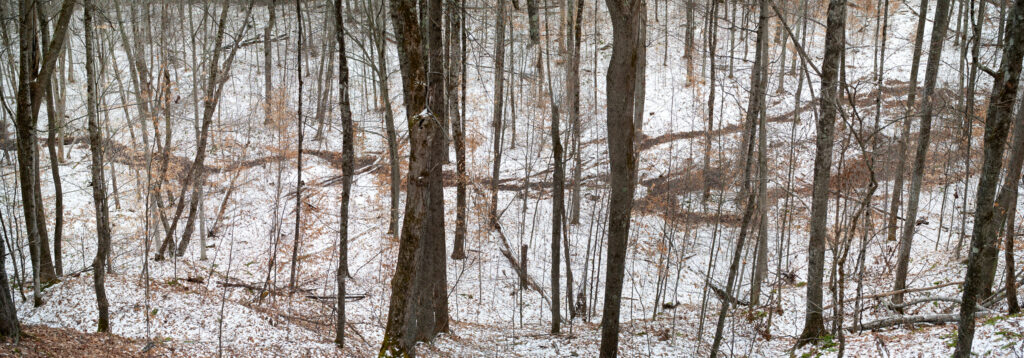
Strafford Town Plan Compliance
Strafford Planning Commission
Proposal: The Alliance of Vermont Communities (AVC) is offering to donate 106.7 acres of mixed woodlands to the Town of Strafford with the intent that it will become a community forest to be used for public purposes such as outdoor recreation, conservation, education and sustainable forestry, including, more specifically, hiking, skiing, bird-watching, nature studies and historical and educational investigation. An adjoining 149.7 acres in the Town of Sharon would be available for the same purposes. The AVC has requested that the Strafford Planning Commission review the proposal to determine if this project would conform to the Strafford Town Plan.
Chapter IX Land Use: This project is clearly consistent with the overall intent of Policy #6: ‘Preservation of open land, farms, forests, wetlands, scenic ridgelines, wildlife habitat and outdoor recreation is encouraged.’
Chapter V Utilities & Facilities: D. Town-owned Public Lands and Recreation: Precedents for publicly accessible Town- or State-owned land in Strafford can be found in the 5-acre Old City Falls Nature Area, the 106-acre Cobb Town Forest, the 27-acre Whitcomb Hill Conservation Area and three State-owned Wildlife Management Areas encompassing 1,388 acres.
According to the AVC, the proposed Ashley Community Forest would provide ‘(1) a productive timber resource, (2) recreational trails (existing and potential), (3) historic resources including a prominent set of cellar holes and stone walls with an abandoned farmstead, and high-quality (4) wildlife habitat and ecological resources.’
(1) Chapter VIII Natural Resources: Forestry and Farming: Policies, Implementation Tasks: This project would to accord with the following Policy: ‘2. Encourage the preservation of the working landscape for the purposes of protecting open space and the scenic quality of Strafford’; as well as with these Implementation Tasks: ‘1. Strafford should consider strategies to encourage the expansion of farming and forestry uses of open space, and to further the education of town citizens with regard to the importance of these activities within the Town. 2. The Town should explore various State, Federal and Town initiatives designed to bolster farming and forestry.’
(2) Chapter V Utilities & Facilities: D. Town-owned Public Lands and Recreation: Other Recreational Areas and Opportunities: The AVC is proposing the creation of a recreational trail in the ACF which would connect to permanent trail easements on both the abutting Manning and Robinson farms for a total of 10 miles of hiking trails. The Town Plan, referring to the current Strafford Trail System, describes it as ‘a testament to the community’s support of outdoor recreation, as private landowners have chosen to allow public access to their property.’ This proposed trail network, including the ACF, would augment the existing trail system and would not be subject to changes, such as of ownership or whim.
(3) Chapter VIII Natural Resources: K. Culturally and Naturally Significant Open Space Areas: Open Lands: ‘Open lands in the uplands may include active farms or old hill farms that are still managed or leased for pasture or haying. These open lands provide views and edge habitat along their hedgerows. Several parts of old hill farms may be in various stages of succession and may provide several different types of habitat.’ The ACF project has emphasized the educational benefits of not only the natural world, including the wildlife and plant ecology, but also of the educational and historical aspects of the cellar holes and stone walls associated with the abandoned farmstead on the property.
(4) Chapter XIII Implementation: Conservation Activities: ‘Conservation programs are an effective means of securing protection of valuable farm and forestland or significant natural resources. Techniques available involve voluntary direct work between non-profit conservation organizations and affected landowners such as donation of conservations easements, bargain sales of land and limited development schemes…It is the intent of this Plan to implement its policies through coordination and the involvement of these organizations and others dedicated to public purposes.’
The ACF project is apparently the culmination of several years of cooperation among non-profit conservation organizations, including the AVC, the Vermont Land Trust and the Vermont Housing and Conservation Board, the Conservation Commissions of Strafford and Sharon and the public through contributions and direct volunteer labor and thus it fairly obviously would exemplify the conservational intent of the Strafford Town Plan’s Implementation Chapter.
XII Relationship To Other Plans: Implementation Tasks: The ACF project clearly accomplishes the first Task: ‘1. To encourage continued communication and cooperation between Strafford and its neighboring towns.’ The Ashley Community Forest is a two-town initiative by Strafford and Sharon, who will share the 256.4-acre parcel. Although each town will own the portion of the acreage within its borders, the plan is to cooperate and co-manage a single community forest and make it accessible not only to the residents of both towns, but to the public at large.
The Strafford Planning Commission, on January 18, 2021:
“Confirmed that the Ashley Community Forest Project conforms to and is consistent with the Town Plan.”
Martha Walke, Sec.
Michael Scanlan
Donald Graham
Greg Colling
Stuart Crocker
Stephen Willbanks, Chair
Sharon Planning Commission
“The Sharon Planning Commission unanimously approved the statement that the proposed Ashley Community Forest project is in compliance with the current and future vision for the Town as reflected in the Town Plan and as supported by the recent Town Plan survey.”
Two respondents in our recent town survey mentioned the Ashley Community Forest as a special area deserving of protection, and an overwhelming majority of respondents expressed an interest in preserving natural and scenic areas.
Good luck, and thanks for your dedication to this project.
Ira Clark
Chair, Sharon Planning Commission
